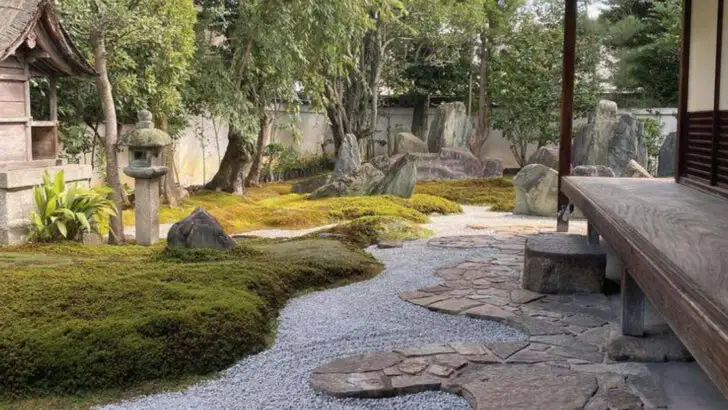Japan won’t scold you—but you’ll know when you’ve messed up. The country runs on quiet codes. Small, unspoken rules. And when you break one, no one yells. No one corrects you. You just get that look. The tiny pause. The polite step back. The feeling that somehow, you just did something weird. From escalator etiquette to ramen slurping, the rules aren’t in the guidebooks—but break enough of them, and you’ll feel like a walking faux pas. Don’t worry—we’ve all done it. This list is your cheat sheet to avoid the awkward moments, blend in a little better, and travel with confidence (and fewer side-eyes).
Cherry Blossoms (Sakura) – Don’t Shake the Branches for a Photo
The cherry blossom, or sakura, is a symbol of renewal and the fleeting nature of beauty in Japan. During spring, tourists throng to capture the perfect snapshot. However, shaking or touching the branches to create a petal shower is frowned upon. Instead, allow the blossoms to gently fall on their own, celebrating their natural grace. This respect for nature reflects broader cultural values. Also, remember to maintain a respectful distance from other admirers to avoid disrupting their moment of tranquility.
Moss Gardens – Stay on the Path, Even If It Looks Empty
Moss gardens, like Saihō-ji, exude tranquility and require preservation. These lush, green carpets are delicate and easily damaged by footsteps. Even if a path appears clear, stay on designated trails to prevent harm. Stepping on the moss may cause damage that takes years to repair, disrupting the ecosystem. This respect for nature showcases the Japanese appreciation for beauty and balance in their environment. Take a moment to pause and reflect, allowing the serene setting to envelop you.
Bamboo Groves – Speak Softly, and Don’t Knock the Stalks
Bamboo groves, like those in Arashiyama, are majestic and invite a hushed reverence. The tall, hollow canes sway gently, creating a natural symphony in the wind. Speaking loudly or knocking on the stalks can shatter this serene atmosphere. Instead, let the grove’s whispers enchant you. This practice respects the sacred aura of these natural wonders. Encourage children to appreciate the grove’s beauty quietly, fostering a lifelong respect for nature.
Raked Gravel Gardens (Karesansui) – Never Walk on the Sand
Zen gardens, with their meticulously raked gravel, embody peaceful contemplation. Each pattern represents water or clouds, crafted to provoke reflection. Walking on the sand disrespects these sacred designs. Admire the artistry from designated areas, allowing the garden to inspire tranquility and introspection. This rule highlights a respect for spiritual and artistic endeavors in Japan. By observing from the periphery, visitors engage more deeply with the garden’s intended experience.
Camellia Trees (Tsubaki) – Don’t Pick Flowers Off the Ground
Camellias, known for their vibrant blooms, offer a poignant symbol of quiet beauty in Japan. These flowers often fall whole, symbolizing life’s fleeting nature. Picking them up or rearranging them disturbs this contemplative symbolism. Instead, appreciate their untouched beauty where they lie, embracing their natural cycle. This appreciation aligns with Japanese values of harmony and impermanence. Allow these blossoms to remind you of life’s delicate balance.
Bonsai Displays – Observe, Don’t Touch
Bonsai trees, miniature marvels of nature, are carefully cultivated for years. Even a gentle touch can upset the delicate balance of pruning and shaping. These living sculptures embody patience and precision, reflecting Japan’s artistry and dedication. Observe with your eyes, not your hands, to preserve their integrity. This respect for craftsmanship ensures the tree’s continued growth and beauty. The lesson extends beyond bonsai, encouraging respect for artistry in all forms.
Plum Blossoms (Ume) – Respect the Early Bloomers
Plum blossoms herald the arrival of spring, often blooming amidst winter’s chill. These vibrant blossoms signal hope and renewal. During festivals, courtyards fill with admirers eager for photos. However, avoid crowding or shaking branches. Respect their delicate beauty and the cultural significance they hold. This behavior underscores a broader appreciation for the season’s natural rhythms and the traditions they inspire. Enjoy their fragrance and beauty from a respectful distance.
Iris Gardens – Don’t Cross Through the Beds for a Shortcut
Iris gardens, such as those at Meiji Shrine, offer stunning displays of color and form. These orderly arrangements invite admiration and reflection. Though the path may seem longer, resist taking shortcuts through the beds. Trampling plants disturbs their arrangement and diminishes their beauty. This respect for order reflects broader cultural values in Japan. Following designated paths ensures the garden’s lasting splendor for all visitors.
Wisteria Tunnels – Be Mindful of Selfies and Foot Traffic
Wisteria tunnels, draped in cascades of purple blooms, entice visitors with their ethereal beauty. During peak bloom, these pathways can become congested with eager photographers. While capturing memories, be mindful of others also wishing to enjoy the spectacle. Keep moving to allow everyone a chance to savor the scene. This consideration extends beyond aesthetics, embodying the courtesy that permeates Japanese culture. By sharing the space, you enhance the experience for all.
Tea Gardens – Don’t Rush the Path or Skip the Pause
Tea gardens, with their carefully arranged stones and plants, offer more than a visual feast. They invite slow, mindful exploration. Each step and pause is a ritual, connecting visitors with the garden’s subtle beauty. Rushing through disrupts this meditative experience. Instead, linger at pause points to absorb the harmonious design. This practice reflects a broader appreciation for deliberate, thoughtful movement in Japanese culture. Embrace the garden’s tranquility at its intended pace.
Ginkgo Trees – Watch Where You Step in Autumn
In autumn, ginkgo trees carpet the streets in gold, creating breathtaking scenes. Beneath the beauty, fallen fruit can be slippery and pungent. Watch your step to avoid unpleasant surprises. This mindfulness respects the natural setting and the community’s efforts to maintain cleanliness. Step carefully to preserve the leaves’ aesthetic appeal for others. The practice mirrors broader cultural values of awareness and respect in shared spaces.
Hydrangeas (Ajisai) – Don’t Snip Blooms to Take Home
Hydrangeas, vibrant in early summer, brighten temple grounds with their lush clusters. While tempting to take home, snipping blooms is seen as disrespectful. These flowers enhance communal spaces, offering beauty to all. Appreciate their vivid hues where they grow, allowing others to enjoy them too. This practice reflects a shared respect for public and communal resources. Let the hydrangeas inspire wonder without diminishing their presence.
Maple Viewing (Momiji) – Avoid Climbing or Leaning on Trees
Maple trees dazzle in autumn with fiery reds and golds, drawing visitors to parks and gardens. However, climbing or leaning on branches can harm these majestic specimens. Admire the colors from a respectful distance, preserving their health and beauty. This respect for nature’s integrity highlights a cultural appreciation for its unaltered state. Celebrate the season’s splendor without leaving a mark.
Street Planters – Don’t Treat Them Like Seating
In small neighborhoods, planters filled with seasonal blooms add charm and vibrancy. These aren’t meant as benches but as displays of community care. Sitting or placing items on them can damage the plants and disrupt their arrangement. Respect these small showcases of local pride by admiring them from a distance. This regard for communal spaces reflects a broader respect for community and environment, encouraging shared joy in simple beauty.
Garden Tools and Watering Cans – Don’t Use What’s Not Yours
In community or temple gardens, tools may be visible but are not for public use. These belong to staff or volunteers keeping the space beautiful. Moving or using them without permission can be seen as intrusive. Respecting these boundaries ensures the garden remains a source of pride and joy for all. This respect for personal and communal property extends to broader interactions in Japan, fostering a sense of shared responsibility.

